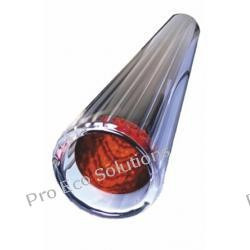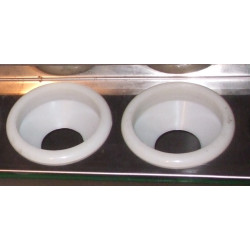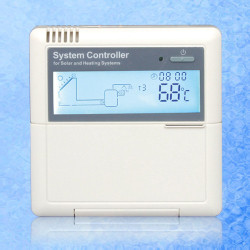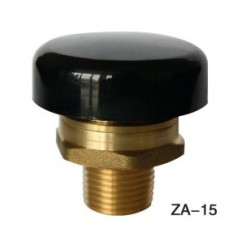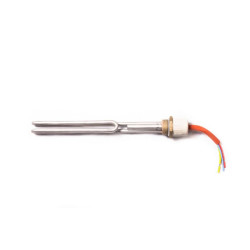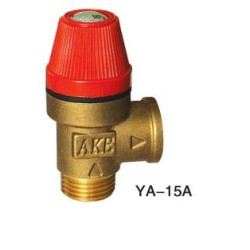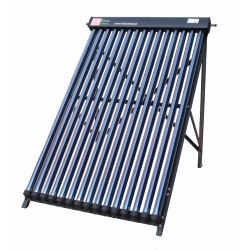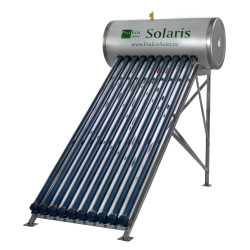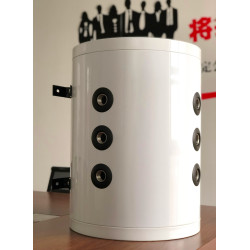Product categories









Collector PROECO MK-20 SUS (non-pressure)
PROECO JNMK-20 SUS
EAN-13: 5902734700490
Solar collector PROECO MK-20 SUS (non-pressure)
- 20 vacuum tubes
- frame made of stainless steel
Solar collector PROECO MK-20 SUS (non-pressure):
- 20 vacuum tubes with absorption layer ALN/AIN-SS/CU
- frame made of stainless steel (with possibility of installation on both oblique and flat surface)
- collector manifold made of stainless steel (inside and outside)
![]() Use:
Use:
An ideal solution for obtaining hot utility water for camping sites, farms as well as for swimming pool heating.
![]() Design:
Design:
The solar collector consists of vacuum tubes made of borosilicate glass. High operational safety of borosilicate glass has been achieved thanks to the use of an appropriate mix of SiO2 and B2O3 oxides, which results that the product has high chemical resistance as well as extraordinary purity and uniformity. Borosilicate glass is environment-friendly and can be recycled many times. The process of thermal annealing (hardening) was also used. Together with the low thermal expansion typical for borosilicate glass gives it a particularly high resistance to changes of temperature in comparison to standard glass. Tubes are resistant to hail size up to 25 mm. The use of tubes with a diameter of 47 mm and 58 mm allows concentric placement of one inside the other. The air between the pipes is pumped out, and the pipes are welded together.
Solar radiation on the absorber placed on the inner tube is converted into thermal energy and causes heating of the interior of the tube. The vacuum between the pipes is an excellent insulator and prevents heat loss. The collector manifold is made of SUS 304-2B stainless steel and is insulated with polyurethane foam.
![]() Principle of operation:
Principle of operation:
There is water in both in the tank and the tubes. Under the influence of sunlight, the water in the tubes heats up. Thanks to convective movements, it goes up to the tank. Water circulates continuously between the tank with water and the vacuum tubes, which causes a constant increase of temperature. of water. High efficiency of the collector results from the ability to absorb diffused radiation (for example, on cloudy days) and maximum reduction of heat loss.
![]() Advantages:
Advantages:
- Higher efficiency of vacuum collector in comparison to standard flat collector.
- Simple design, low failure rate - tube lifespan of over 15 years.
- Easy servicing and self installation possible.
![]() Installation and operating instructions:
Installation and operating instructions:
| Color of the collector frame | silver |
| Color of the collector main | silver |
| ------------------------------ | COLLECTOR: |
| Number of vacuum pipes | 20 |
| ''Heat pipe'' use | no |
| Size of the vacuum tube | diameter: 58 mm outside/47 mm inside, thickness of wall 1,6 ± 0,15 mm, length: 1800 mm. |
| Type of absorber | (aluminum nitride with copper and steel layers) CU/SS-ALN(H)/SS-ALN(L)ALN |
| Efficiency of the absorption | α = 0.92~0.96 (AM1.5) |
| Lossy emission | ε = 0.04~0.06 (80℃ ± 5℃) |
| Degree of vacuum | P. ≤5.0X10ˉ³ (PA) |
| Temperature of stagnation | 260~300℃ (inside empty tube) |
| Average heat loss | ULT 0.4~0.6 W/(m2~﹡℃) |
| Resistance to hail | Φ25 mm |
| Lifespan | > 15 years |
| ------------------------------ | FRAME: |
| Material | stainless steel |
| Resistance to wind | 180 km/h |
- 3. Hot water outflow:
- under the influence of gravity
- 4. Installation on an surface:
- for flat or sloping to 80 degrees
- Number of vacuum tubes (pcs.):
- 20
- Size of the vacuum tubes (mm.):
- 58 mm / 1800 mm
- Use of Heat-Pipe:
- NO
- Heat exchanger in the tank:
- no
- Bracket:
- stainless steel SUS 201

 36 rat x ~61 zł
36 rat x ~61 zł


